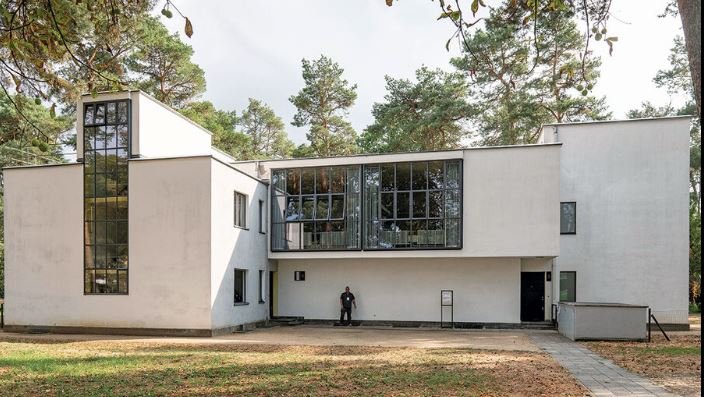Bauhaus Movement: Design Principles and Legacy
- By -Peter
- Posted on
- Posted in Modern Architecture
The Bauhaus movement, founded in Germany in 1919, revolutionized design and architecture by emphasizing functionality, simplicity, and the unity of art, craft, and technology. Its influence spread globally, shaping modern aesthetics and design philosophies.

Principles of Bauhaus Design
Bauhaus design principles are rooted in clarity, simplicity, and functionality. “Form follows function” encapsulates its approach, where aesthetic choices are guided by practical considerations and the purpose of the object.
Integration of Art and Technology
Central to Bauhaus ideology was the integration of art and technology. This interdisciplinary approach aimed to bridge the gap between fine arts and applied arts, fostering innovation and efficiency in design.
Minimalism and Geometry
Bauhaus embraced minimalism and geometric shapes, favoring clean lines, right angles, and simple forms. This emphasis on geometric abstraction contributed to the movement’s distinctive visual language.
Bauhaus Architecture
In architecture, Bauhaus principles led to the creation of buildings characterized by functionality, open floor plans, and the use of modern materials like steel and glass. Bauhaus architecture prioritized practicality without sacrificing aesthetic appeal.
Bauhaus in Art and Painting
Artistically, Bauhaus artists explored abstract forms, emphasizing color theory and geometric abstraction. Artists like Wassily Kandinsky and Paul Klee were pivotal in shaping the movement’s artistic expression.
Impact on Modern Design
The Bauhaus movement had a profound impact on modern design disciplines, influencing everything from furniture design to graphic design. Its legacy is evident in the clean lines, simplicity, and functionality seen in contemporary products and artworks.
Bauhaus and Typography
Bauhaus typography revolutionized graphic design by prioritizing readability, clarity, and simplicity. The use of sans-serif fonts and grid-based layouts became hallmarks of modern typography inspired by Bauhaus principles.
Global Influence and Spread
Despite its closure in 1933, the Bauhaus school’s influence spread globally through its faculty and students who disseminated its ideas across Europe and the United States. Its principles continue to inspire designers worldwide.
Legacy in Education
Bauhaus revolutionized design education by advocating for a holistic approach to art and design education. Its curriculum emphasized practical skills, experimentation, and the integration of theory with hands-on practice.
Bauhaus Today: Continuing Relevance
In contemporary design, Bauhaus principles remain relevant as designers continue to prioritize functionality, simplicity, and the integration of art and technology. Its enduring legacy underscores its timeless contributions to creative disciplines.
Challenges and Criticism
Critics argue that Bauhaus design can sometimes prioritize utility over human comfort and cultural context. Its minimalistic tendencies have been both celebrated for their purity and criticized for their perceived coldness.
Sustainability and Bauhaus Ideals
Today, Bauhaus ideals resonate with sustainability efforts as designers seek to create environmentally conscious and durable products. The movement’s focus on efficient design and material use aligns with modern sustainability principles.
Conclusion: Bauhaus as a Cultural Movement
The Bauhaus movement remains a pivotal force in shaping modern aesthetics and design philosophies. Its emphasis on functionality, simplicity, and the integration of art and technology continues to inspire and influence creative disciplines worldwide. By understanding Bauhaus principles and their legacy, designers can appreciate its profound impact on architecture, art, and contemporary design practices.
By embracing Bauhaus ideals of clarity, minimalism, and functionality, designers can continue to innovate while honoring the movement’s rich legacy. Bauhaus’s enduring relevance underscores its status as a transformative cultural phenomenon that continues to shape the way we perceive and create art and design today.



